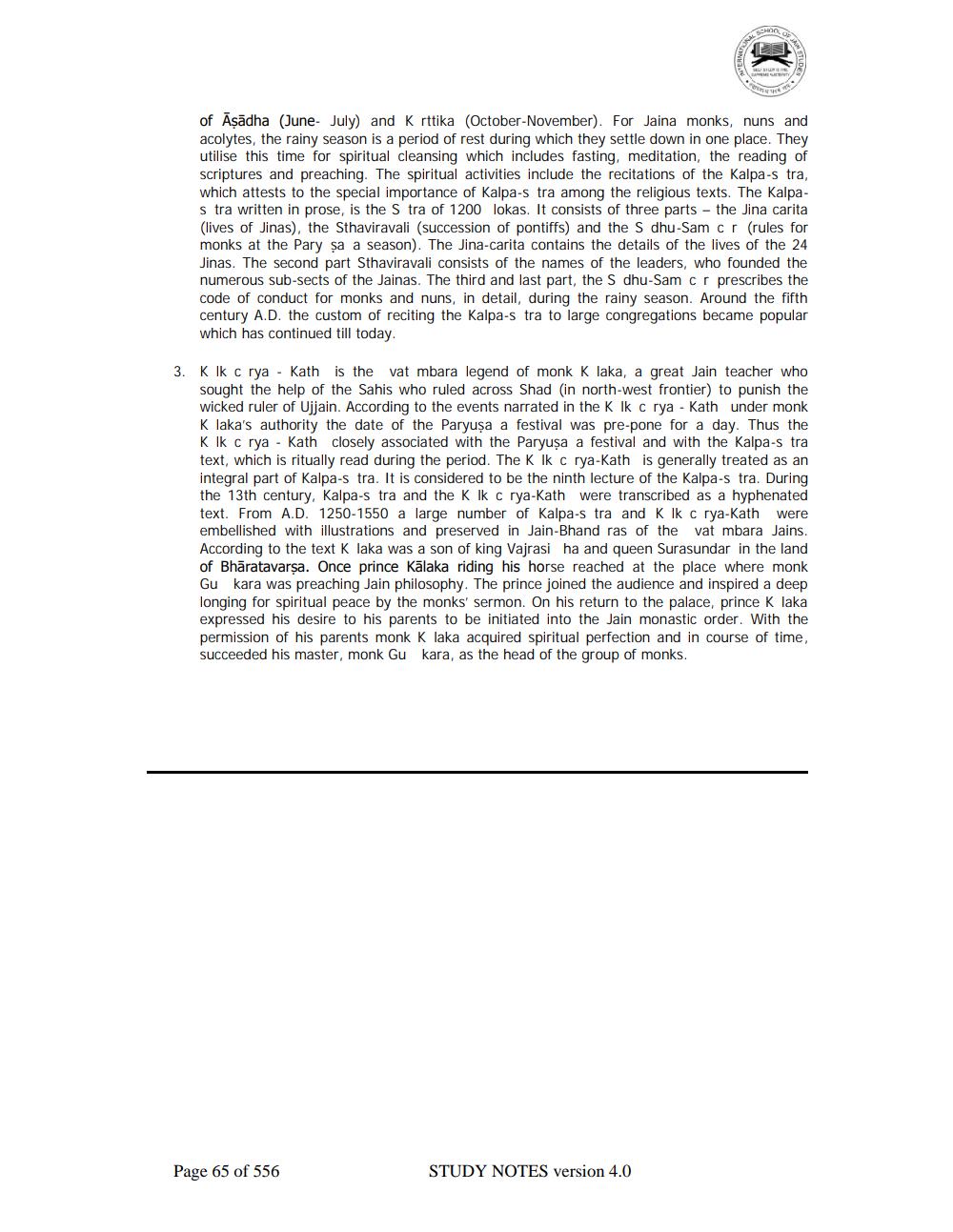________________
of Āsādha (June-July) and K rttika (October November). For Jaina monks, nuns and acolytes, the rainy season is a period of rest during which they settle down in one place. They utilise this time for spiritual cleansing which includes fasting, meditation, the reading of scriptures and preaching. The spiritual activities include the recitations of the Kalpa-s tra, which attests to the special importance of Kalpa-s tra among the religious texts. The Kalpas tra written in prose, is the S tra of 1200 lokas. It consists of three parts - the Jina carita (lives of Jinas), the Sthaviravali (succession of pontiffs) and the S dhu-Sam cr (rules for monks at the Pary sa a season). The Jina-carita contains the details of the lives of the 24 Jinas. The second part Sthaviravali consists of the names of the leaders, who founded the numerous sub-sects of the Jainas. The third and last part, the S dhu-Sam cr prescribes the code of conduct for monks and nuns, in detail, during the rainy season. Around the fifth century A.D. the custom of reciting the Kalpa-s tra to large congregations became popular which has continued till today.
3. Klk c rya - Kath is the vat mbara legend of monk Klaka, a great Jain teacher who
sought the help of the Sahis who ruled across Shad in north-west frontier) to punish the wicked ruler of Ujjain. According to the events narrated in the K Ik c rya - Kath under monk K laka's authority the date of the Paryusa a festival was pre-pone for a day. Thus the Kik c rya - Kath closely associated with the Paryusa a festival and with the Kalpa-s tra text, which is ritually read during the period. The K k c rya-Kath is generally treated as an integral part of Kalpa-s tra. It is considered to be the ninth lecture of the Kalpa-s tra. During the 13th century, Kalpa-s tra and the Kik c rya-Kath were transcribed as a hyphenated text. From A.D. 1250-1550 a large number of Kalpa-s tra and K lk c rya-Kath were embellished with illustrations and preserved in Jain-Bhand ras of the vat mbara Jains. According to the text k laka was a son of king Vajrasi ha and queen Surasundar in the land of Bhāratavarşa. Once prince Kālaka riding his horse reached at the place where monk Gu kara was preaching Jain philosophy. The prince joined the audience and inspired a deep longing for spiritual peace by the monks' sermon. On his return to the palace, prince K laka expressed his desire to his parents to be initiated into the Jain monastic order. With the permission of his parents monk K laka acquired spiritual perfection and in course of time, succeeded his master, monk Gu kara, as the head of the group of monks.
Page 65 of 556
STUDY NOTES version 4.0




